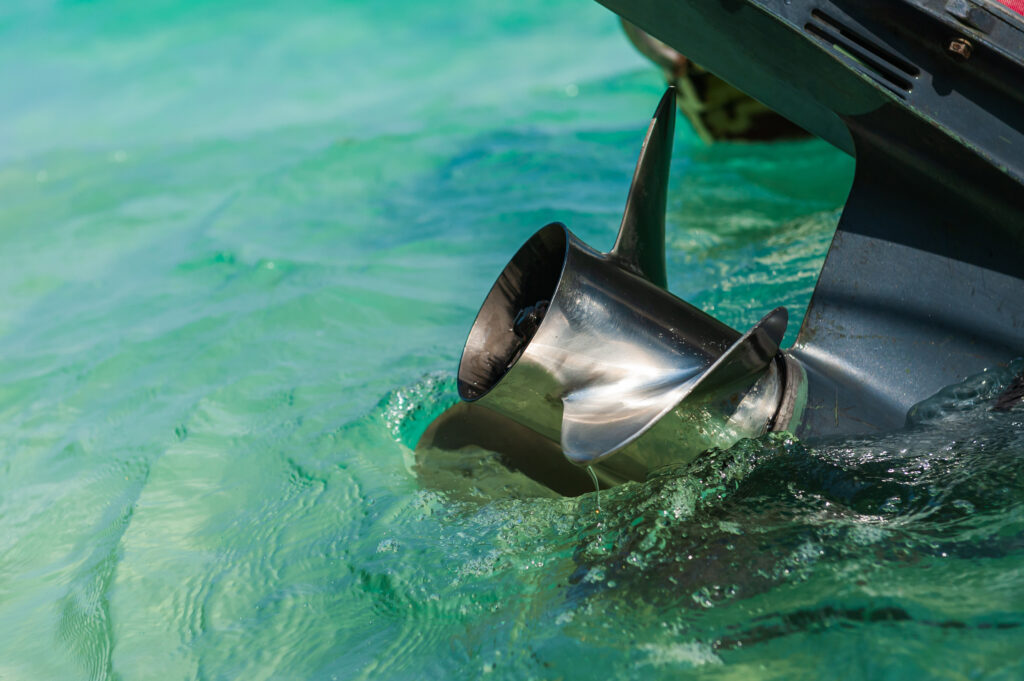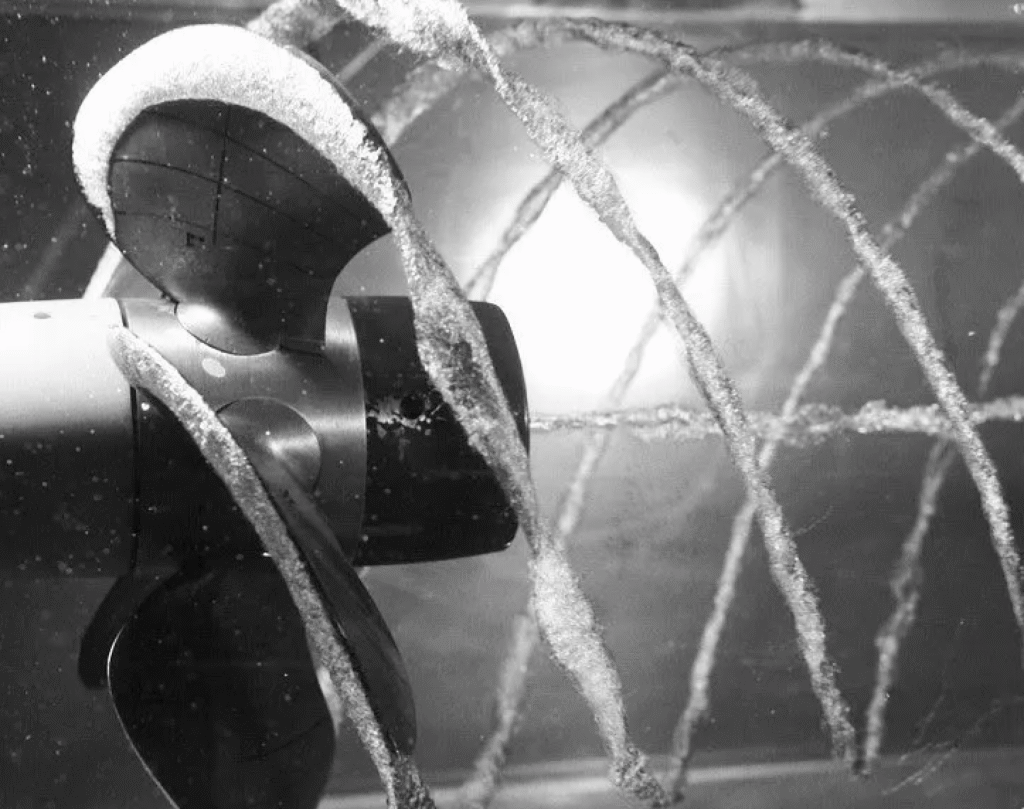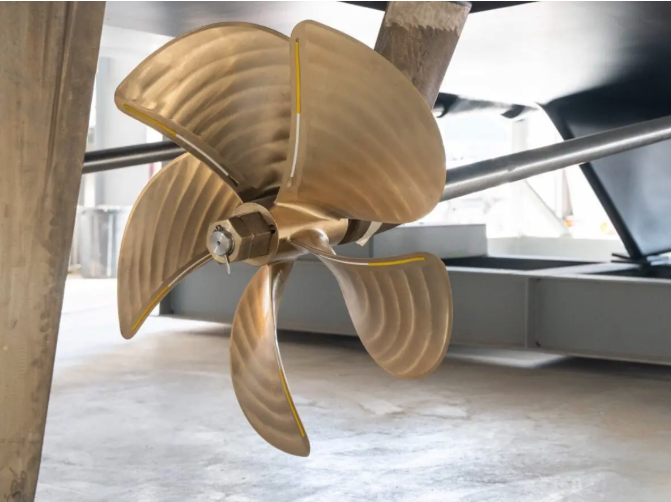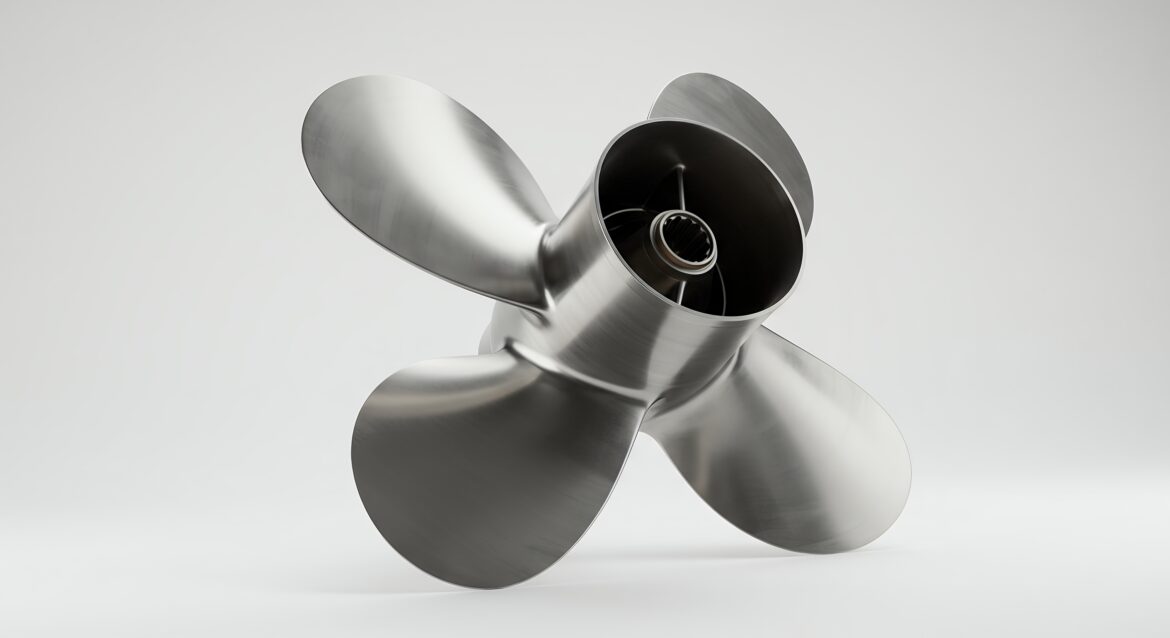
Why “that’ll do” might not do
In the case of automotive performance, there are myriad considerations like wheel size, tyre compound and profile, gear and final drive ratios and transmission shiftmode settings etc. However, with outboardpowered boats, even of the performance variety, everything is starkly rudimentary. It boils down to two main factors: engine set-up and choice of propeller. Every boat, be it a family runabout or a high-speed powerboat, must be set up properly to perform as intended and be fully fit for purpose. Most builders and dealers have this practice (some even call it a “science” of sorts) down to a fine art, but some go the extra distance by optimising instead of compromising. Let’s look at how that power gets turned into motion.
Does an outboard have a gearbox?
An outboard motor does not, in the true sense, have a gearbox. It is more correct to say that it incorporates a transmission housed in what is known as the lower unit, albeit with a fixed gear ratio which best suits that engine. This is a “reduction ratio” so that the propeller rotates at a much lower speed (RPM) than the engine, and except for selection of forward-neutral-reverse, there are no “stepped” gears to change. Simply put, if an outboard has a 2:1 gear ratio and reaches 6,000 RPM at wide-open throttle, the propeller will turn at half that speed – i.e. 3,000 RPM. The lower unit is the only way to get power to the propeller, and therefore to the water – the sole point of delivery, in fact. And this is why the propeller is the key to whether your boat will sprint like a racehorse or saunter like a carthorse.

Pitch perfect
Simplistically, the “pitch” of a propeller is the theoretical distance a boat will move through the water in one revolution. Even in the metric era, propellers, like automotive tyres, are still categorised in inches. A propeller with a pitch of 19” should – all factors being perfect – drive the boat forward by 19 inches. But absolute perfection is not possible, and things like propeller slip (every propeller must have a small degree of inherent slip to operate effectively), plus the cleanliness and/or design of the boat bottom and engine mounting height are all factors to be considered. Some propellers are more “honest” in pitch than others and a stainless-steel propeller will always be truer in pitch, and much more effective, than an aluminium propeller of the same size – the reason being that there is considerable flex and distortion in aluminium blades. Propellers not only have different pitches, but different diameters also, and there is a reason for this. For example, you may have a propeller with a 13” diameter and 19” pitch but wish to change to, say, a more suitable propeller with 17” pitch. But the diameter would correspondingly increase to maybe 13.25”. The reason for this is to keep the engine RPM relatively uniform – smaller pitch requires compensatory larger diameter and vice versa.
The old rule of thumb (albeit not as relevant today with modern 4-strokes that are more tractable and linear and less “peaky” than the old 2-strokes) is that a change of one inch in propeller pitch upward will decrease engine speed by 200-300 RPM, and one inch downward will increase RPM likewise. But there is no gain to be had at all – quite the inverse, actually – by fitting a higher-pitch propeller to a motor already struggling to reach its specified RPM range. This would be like trying to drive a manual transmission car up a hill in top gear while towing a trailer.
The motor must be fitted with a propeller that allows it to reach the highest boundary of its specified RPM range with the boat light to moderately laden, so that it will still rev properly with a boat full of crew, gear and fuel. If maximum permissible RPM is 6,300, then the motor should be propped to go as close to that as possible. Modern 4-strokes don’t mind high RPM at all, but they hate being laboured or “lugged”.

The more the merrier?
Two outboard models – the Mercury 600 hp Verado and the Suzuki DF325/350A – feature twin propellers (i.e. counter-rotating units on a single axis). This is a feature that completely “dials out” any torque bias from a single propeller (always right-hand rotation) that may make the boat veer or lean to port at speed. However, 99% of outboards put the power to the water through a single propeller – mainly with three blades. In some cases, more blades (four or, in rare instances, five) may yield better acceleration or stern lift, or keep a stern-heavy boat on plane at lower speeds but, by and large, more blades equate to more drag and lower top speed. If, for some reason, a swap is required from a 3-blade propeller to a 4-blader to address a handling or running issue, it will probably be necessary – due to the extra drag and load from the fourth blade – to reduce the pitch. For maximising performance and traction, I am resolutely of the belief that anyone with a high-horsepower outboard (i.e. 140 hp and over) should always default towards a stainless-steel propeller – installing an aluminium prop on a large outboard is like fitting budget tyres on a sportscar.

Wailing and flailing
An outboard-powered boat can be afflicted by two conditions – ventilation and cavitation – which can both erroneously be mistaken for each other. Ventilation (the name gives a clue) occurs when the propeller literally “gulps air” due to breaking free on a hard turn or when the boat leaves the water at speed. It can also be due to the motor being mounted too high (vertically) on the transom when originally bolted to the boat, but no competent dealer would make such a fundamental error.
The symptom of ventilation – other than abruptly lost forward motion – will be a highish-pitched, sudden “screaming” sound, like a power drill with a broken bit or a whipper-snipper that has just spat the cord. To regain motion, the remedy is to ease off the throttle (sometimes a complete start again from just above idle may be necessary) and accelerate away smoothly.
Cavitation, a much more serious malady, is a result of the water around the propeller blades starting to boil and form aerated bubbles, which collapse against the blade. In severe cases, there will be pitting and dimpling on the blades. Cavitation manifests itself in almost the same way as ventilation, but the whine from the motor starts more gradually before building to an angry roar, usually accompanied by a thumping vibration through the entire boat. One cause of cavitation is the fitting of a propeller too large in pitch, whereby the blades cannot effectively “hook up” properly to move the boat. A bent or nicked propeller will also produce the same symptom – but so will foreign material or growth on the bottom of the boat. I’ve even seen an instance where a keel prevented proper water flow to the propeller and thus had to be cut and tapered to allow clean water to reach the lower unit.
Whilst ventilation can be attributed to operator error, cavitation indicates some other factor that will need to be remedied. Anyone who buys a properly set-up boat from a dealer may occasionally experience the former but almost certainly never the latter.
And a common error (by laymen and experts alike) is to refer to the surfaceskimming horizontal flange above the propeller as the “cavitation” plate. As cavitation is caused by forward (not upward) motion and aeration, this is anomalous. The correct name for that flange is the “anti-ventilation” plate.
And that’s all there is to it…
Just as most motorists don’t know, or don’t want to know, what makes the engine turn and the wheels go round, many boaters just want a relaxing, idyllic day on the water without the burden of having to analyse and over-brain the mechanics of their precious activity. However, many would acknowledge that there is some sense of satisfaction and fulfilment to be gained from possessing even a little knowledge of how the vessel you are commanding actually works. And we can therefore finish by loosely paraphrasing the old adage: “Some may be none the wiser, but they will certainly be better informed.”



